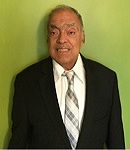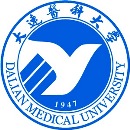Day 2 :
- Track 3: Safeguard of Injectables and Leachables
Track 4: Manufacturing Considerations in Delivery devices
Track 13: Drug Development and Designing
Session Introduction
Panayiotis P Constantinides
Biopharmaceutical & Drug Delivery Consulting, LLC, USA
Title: Parenteral Drug Nanodispersions : Manufacturing, Characterization and In Vitro/In Vivo Performance Evaluation

Biography:
Dr. Panayiotis (Panos) P. Constantinides is the President of Biopharmaceutical & Drug Delivery Consulting, LLC and Affi liated Professor of Biopharmaceutical Sciences at Roosevelt University, College of Pharmacy in Schaumburg, Illinois, with 25 years of experience in drug delivery and pharmaceutical development. He received a University Diploma in Chemistry from Athens University in 1977 and PhD in Biochemistry from Brown University in 1983. He was a postdoctoral fellow in the Pharmacology Department and Associate Research Scientist in the Comprehensive Cancer Center of Yale University School of Medicine (1983-1987). Past industrial positions held included: Vice President of R&D with DOR Biopharma and Morton Grove Pharmaceuticals (2001-2004), Director of Research at SONUS Pharmaceuticals (1997-2000) and from 1987 to 1997 a number of R&D positions of increasing responsibilities with LipoGen, SmithKline Beecham Pharmaceuticals and Abbott Laboratories. In addition, he serves as scientifi c advisor in early stage companies and contract research organizations. He has held adjunct faculty appointments with the Pharmaceutics Department of Washington University in Seattle, WA and the Department of Biochemistry of the University of Tennessee, in Knoxville, TN. He is inventor in 33 patents and patent applications, has authored more than 130 publications and has been invited speaker at many national and international conferences, biotech/pharma companies and universities. Dr. Constantinides is AAPS Fellow, current Chair of the AAPS Formulation Design and Development (FDD) Section and Past Chair of the Lipid-Based Drug Delivery Systems and the Nanotechnology Focus Groups.
Abstract:
There have been major advances and achievements in the use of nanoparticles for parenteral drug delivery and targeting especially for cancer drugs and biologics. Of particular interest are drug nanodispersions and include, liposomes, nanoemulsions, solid lipid nanoparticles, polymeric micelles, dendrimers, nanocrystals and nanosuspensions. Directing therapeutics to intracellular targets and selectively killing disease cells is the primary driving force behind the rapid evolution of nanoparticle-based approaches. A brief overview of nanoparticle design, manufacturing, characterization and in vitro/in vivo assessment, including Quality-by-Design (QbD) aspects, will be discussed during the first part of the talk. Case studies will then be presented with parenteral small molecules, approved drugs or New Molecular Entities (NMEs) employing nanoemulsions, liposomes, polymeric micelles and solid lipid nanoparticles. Improvements in the manufacturing methods and better understanding of the factors controlling stability will certainly expand the use of nanodispersions in parenteral drug
Jianfeng Hong
Fresenius Kabi, USA
Title: Extractable and leachable studies of parenteral infusion and transfusion products

Biography:
Jianfeng Hong is a Senior Research Scientist and the Manager of the Analytical Chemistry laboratory at Lake Zurich, Illinois of Fresenius Kabi USA LLC. His major responsibilities include leading a group of analytical chemists to perform extractable and leachable testings, as parts of biocompatibility studies for material characterizations, for transfusion and infusion products of blood and pharmaceuticals of Fresenius Kabi. His group uses a wide variety of advanced analytical instrumentation including GC/ MS, UPLC/UV, Q-TOF mass spectrometer with accurate mass capability, ICP and TOC. He has over eighteen year experience as an analytical chemist with pharmaceutical and medical device industries. He earned a Master’s degree in Analytical Chemistry from University of Louisville, Kentucky, USA.
Abstract:
This presentation will describe the general extractable/ leachable study practices of parenteral infusion and transfusion products. It will include (1) extractable and leachable study designs and extractable/leachable study work flows using a wide variety of analytical techniques (UPLC/UV/MS, GC/MS, ICP and TOC). (2) The determinations of concentration thresholds for extractable and leachable that require identification and quantification (3) risk assessments of the extractable and leachable compounds and (4). Selection and analytical method development/validation is carried out for target leachable compounds that are monitored for the stability evaluation of infusion and transfusion products.
Neervalur V Raghavan
Rags Pharma Consulting, LLC, USA
Title: Systematic approach to development of aqueous drug formulation and drug device combination injectable products and challenges

Biography:
Neervalur V Raghavan is an experienced leader of R&D organizations that have successfully developed novel formulations and implemented practical manufacturing solutions for drug entities that have poor solubility and limited shelf life. He has provided key leadership to drive strategic business initiatives, long term process optimization activities and the technical development of a scientifi c staff that is known throughout the industry. He is responsible for developing over 200 product presentations that include novel frozen drug formulations, inhalation therapy products, sterile, ready to use injectable antibiotic solutions and aseptic form fill seal injectable products. He has earned a PhD degree in Chemistry from University of Southern California, Los Angeles. After serving as a Postdoctoral fellow at Ohio State University, he joined University of Notre Dame focusing on radiation chemistry of low levels of aromatic aqueous solutions, utilizing HPLC and fast reaction kinetics. Then he joined Baxter Health Care Corporation and served there over thirty years, with increased responsibility, on sterile drug product development. He retired as VP of Pharmaceutical Product Development R&D. He had active membership with AAPS and ACS.
Abstract:
The topic will cover fundamental aspects of development of aqueous injectable products ranging from small to large molecules. Emphasis will be placed on approaches to meet safety and stability to meet global regulatory considerations and market needs. In addition, particular challenges from formulation, analytical, and processing perspectives that are typically experienced in the development of drug device combo products and how to anticipate and to overcome them with carefully designed and systematic approaches during product development phase will also be discussed. A brief review of the challenges to the development of aqueous parental drug formulations will also be presented.
Claudia Mueller
F. Hoffmann-La Roche Ltd., Switzerland
Title: Development of co-formulations of monoclonal antibodies and recombinant human hyaluronidase (rHuPH20)

Biography:
13 years experience in Clinical Drug Development phase I-III; clinical study design, protocol and CRF development, SMT lead, clinical trials
Abstract:
For patients, subcutaneous (SC) administration represents a convenient alternative to i.v. infusion. However, SC application faces limitations with regards to the drug volume that can be administered. To enable delivery of the necessary doses, increase in the concentration of the drug and/ or temporary enlargement of the interstitial space at the injection site, e.g. by using recombinant human hyaluronidase (rHuPH20), are potential strategies to face this challenge. This presentation highlights the technical development approaches used at Roche for the drug product development of co-formulations consisting of concentrated monoclonal antibodies and rHuPH20. The presentation will focus on particular challenges for formulation and process development arising from combination of two very different proteins in order to maintain both stable and active within one formulation

Biography:
Josh Russell, the Life Sciences Product Manager at AST is a leading industry advocate for adaptive manufacturing strategies and technologies that address production and quality challenges faced within the biopharma industry. He has been a frequent speaker, author and contributor of technical articles discussing market trends of parenteral processing and discussing advanced aseptic processing technologies such as; pre-sterilized single-use disposables and containers, and robotic automation with isolator-barrier systems. As Product Manager, he works with AST’s engineering, process and controls experts, along with industry partners to provide solutions to aseptic manufacturing challenges. He holds a Bachelor of Science degree in Mechanical Engineering from Saint Martin’s University and has over ten years’ experience in drug substance and drug product manufacturing.
Abstract:
With the biopharma industry focus on producing biologic and protein based therapies the manufacturing paradigm is requiring a shift from dedicated high volume manufacturing strategy to one that requires flexibility to produce low volumes of high value products in multiple delivery systems. Technologies are emerging that provide not only a high degree of flexibility, but also provide a foundational manufacturing template that can be leveraged to reduce cost and risk. One of the key enabling technologies is the more recent introduction of ready-to-use vials and cartridges, which compliment well established pre-filled syringes options, allows manufacturers to adapt their current manufacturing mind-set to one that is more affordable and responsive to current and future pipelines. This presentation will discuss the key market trends associated with the manufacture of biotherapies, automated aseptic processing of pre-sterilized ready-to-use (RTU) containers (e.g. vials, syringes, and cartridges) on a modular manufacturing platform for these products, and experiential based recommendations for implementation of RTU formats in aseptic processes.
Dipesh Shah
Catalent Pharma Solutions, USA
Title: Compatibility assessment of a model monoclonal antibody formulation in glass and in blow-fi ll-seal (BFS) plastic vial delivery formats

Biography:
Dipesh Shah is a Senior Development Engineer at Catalent Pharma Solutions,USA. He received his PhD in Pharmaceutical Sciences from University of Missouri-Kansas City in 1998. He has seventeen years of experience in development of parenteral and oral formulations and supported global CMC regulatory submissions and commercial launch of globally approved products.
Abstract:
The purpose of this study was to compare he compatibility of a model monoclonal antibody (mAb) formulation in glass and in AdvaseptTM BFS stoppered plastic vials. Th e biotechnology industry has expressed a strong interest in the use of plastic vials to reduce or eliminate problems associated with glass vials such as protein-surface interactions, vial breakage and glass delamination. In addition, the use of plastics can enable drug manufacturers to produce flexible primary container designs and leverage BFS automated advanced aseptic filling techniques. However, the selection of an appropriate BFS-derived plastic vial compatible with protein therapeutics requires knowledge of the vial’s component chemistry, BFS process and its impact on protein safety and efficacy. This study evaluated the compatibility of a model mAb formulation in glass and compared it to AdvaseptTM vials incorporating uncoated stoppers. The studies evaluated protein potency (UV, activity), protein stability (SEC, SDS-PAGE, cIEF, NTA and Peptide Mapping) and leachables (GC-MS, GC-FID, HPLC-UV and ICP-MS) in glass and in AdvaseptTM vials over long-term storage under refrigerated conditions (5°C). Results indicate that the mAb’s stability was comparable in both primary container systems.
Li-Chun Tsou
Astra Zeneca Pharmaceuticals, USA
Title: Drug delivery device strategy for patient centric therapies

Biography:
Li-Chun Tsou is currently Global Devices Technical Director at Astra Zeneca where she oversees device operations quality for parenteral diabetic product portfolio. She has been working in biopharmaceutical companies for 20-years from design concept to commercial launch; she leads auto-injectors projects across functional groups and geographic boundaries to support cutting edge drug delivery device technology for patient-centric therapeutics
Abstract:
Parenteral devices have experienced many years of success and continue to be the main stream of fighting hard-to-treat diseases for patients. The strength of injectable drug delivery technology offers targeted treatment and self injection options enabling users to take control of their health. The threat which injectable devices have encountered in recent years is the arm race among biotech companies to develop oral medicine of Hep-C, insulin, anti-TNF, and GLP-1. The opportunity of wearable bolus injector designed for viscous biologics and protein drugs provides oncology patients new devices to reduce in-clinic visit. For answering humanitarian outcry in supplying life-saving drugs in developing countries, blow-fill-seal technology becomes feasible to balance drug supply and affordable price. Market landscape changes and regulatory environment demand prompt Pharmaceutical industry to understand that device innovation and manufacturability are keys to bring cutting edge devices for patients. Many elite gold-medal olympic athletes train themselves harsh as if they were number two. Many prominent Pharmaceutical companies develop new drugs at tremendous risks of cannibalizing their own existing products. They have vision if they do not innovate, their competitors will. In biotech field, maintaining current status is a sure sign to be outdated while everyone else is progressing.

Biography:
Raja Roy conducts research on technological change, innovation, and US competitiveness in the manufacturing of industrial products such as robotics, machine tools, and vision sensors. He earned his PhD in Strategic Management from the University of Pittsburgh. His research has been published in Strategic Management Journal, Research Policy, and Advances in Strategic Management. He holds an MBA in International Marketing from the Indian Institute of Foreign Trade, New Delhi, India and BE in Production Engineering from Jadavpur University, Kolkata, India. Prior to pursuing an academic career, he worked as Manager (Exports), Hindustan Unilever Ltd. and as Manager, Calcutta Electric Supply Corporation, Ltd.
Abstract:
We investigated how incumbent differences affect their response to a disruptive change and found that incumbents with access to in house knowledge that helps them understand “what to develop and design” and “how to do it,” are likely to be the leaders in matching the performance features in a disruptive product. We used the advent of machine tools with disruptive Computer Numerical Control (CNC) technology as the context and concentrated on the transition period when the machine tool demand was shifting from customized machine tools with mechanical controls to standardized machine tools with CNCs. We found that incumbents with access to in house users and broad pre-disruption component experience were the leaders in matching the agility of the disruptive products. Our findings suggest that the boundary conditions for the theory of disruption are more nuanced than what the literature predicts






